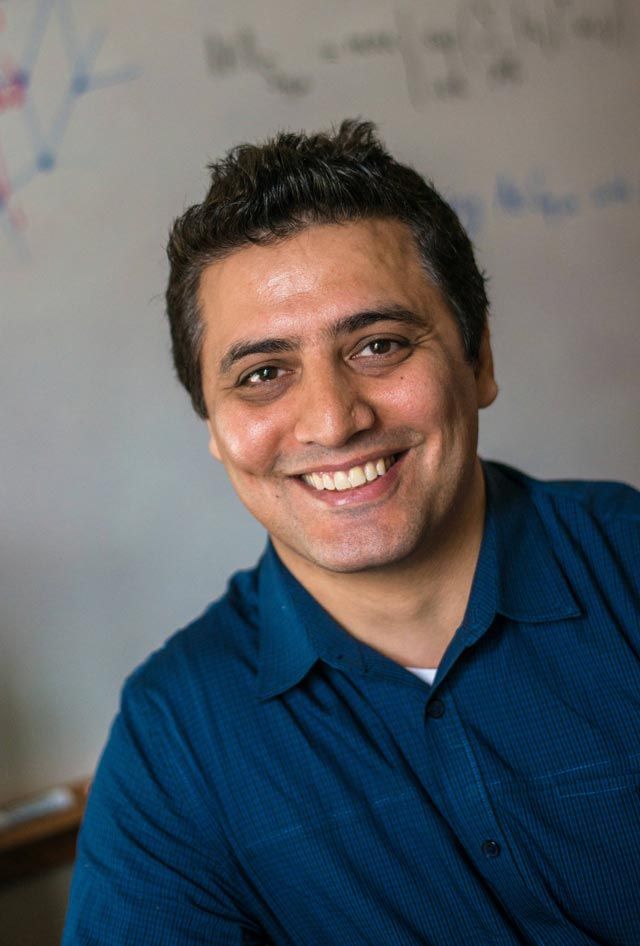A cell is a dynamic, complex arrangement of nucleic acids, proteins and molecules that work together. An electrical grid connects wind and solar farms to homes and businesses with generating stations and transmission lines.
If one component fails in either system—cell or grid—the entire system can crash. A town might experience a blackout if a falling tree severs an electrical line.
Nader Motee, the P.C. Rossin Assistant Professor of Mechanical Engineering and Mechanics, studies the conditions that cause complicated networks to collapse. Besides cells and power grids, he examines networks of banks and of unmanned aerial vehicles (UAVs). Each system has components, or nodes, that actin concert by exchanging large amounts of data with other nodes.
“All of these systems have distinctly different problems, but they follow the same mathematical laws,” says Motee, who recently received a CAREER Award from NSF. His goal is to formulate a unified theory that helpsresearchers make the networks more robust.
The coupling between two nodes in a system can be expressed as a line, says Motee. “If one bank gives another bank a loan, that’s simple, draw a line between them. Now add in more banks that exchange money and depend on each other. As you draw more lines between banks, you make a graph, and it keeps getting more complex and more prone to failure.”
Managing that complexity requires new mathematical tools and techniques.
“Over the past three years, we’ve been trying to come up with rules to make the best possible shape for that model graph. We have been able to prove that if you add a new link to a specific part of the graph, it works better. If you get rid of certain couplings, the risk of collapse increases. We are getting closer to figuring out how to reshape the overall network.” Nature, says Motee, is an inspiring source of information.
“We can learn from cell biology. Cells have been able to survive, under all kinds of conditions, for several million years. They must operate in a really efficient way. So far, our ideas are long shots, but we are hoping to find a common solution for all of these systems.”

